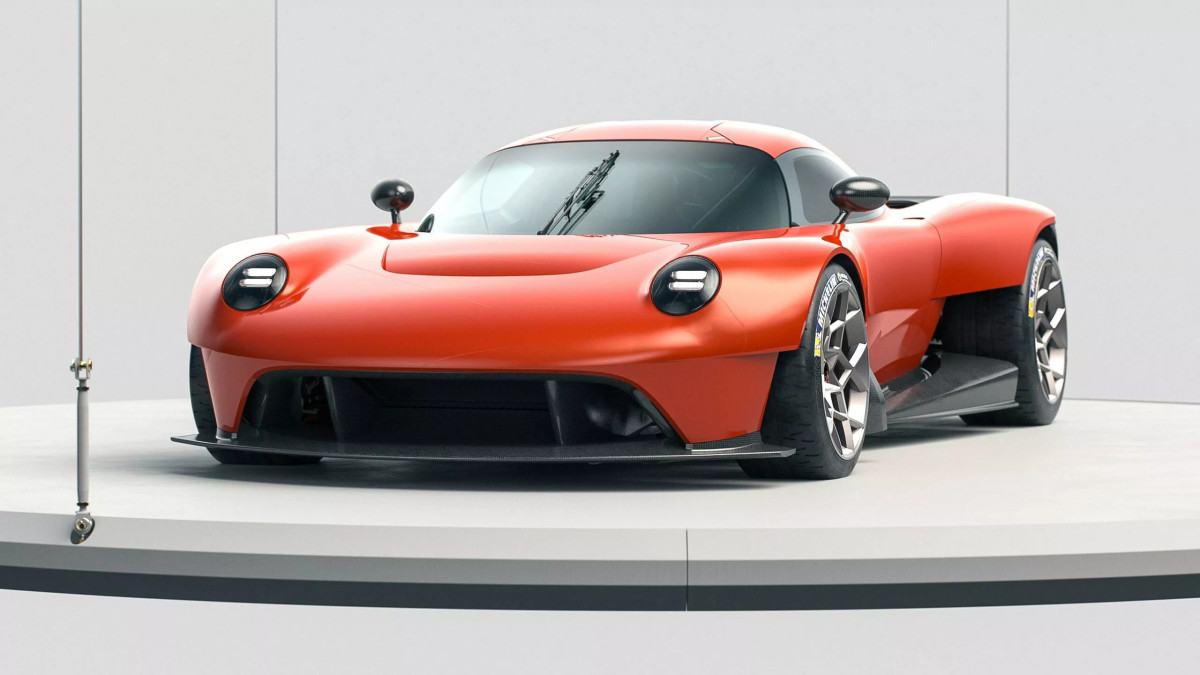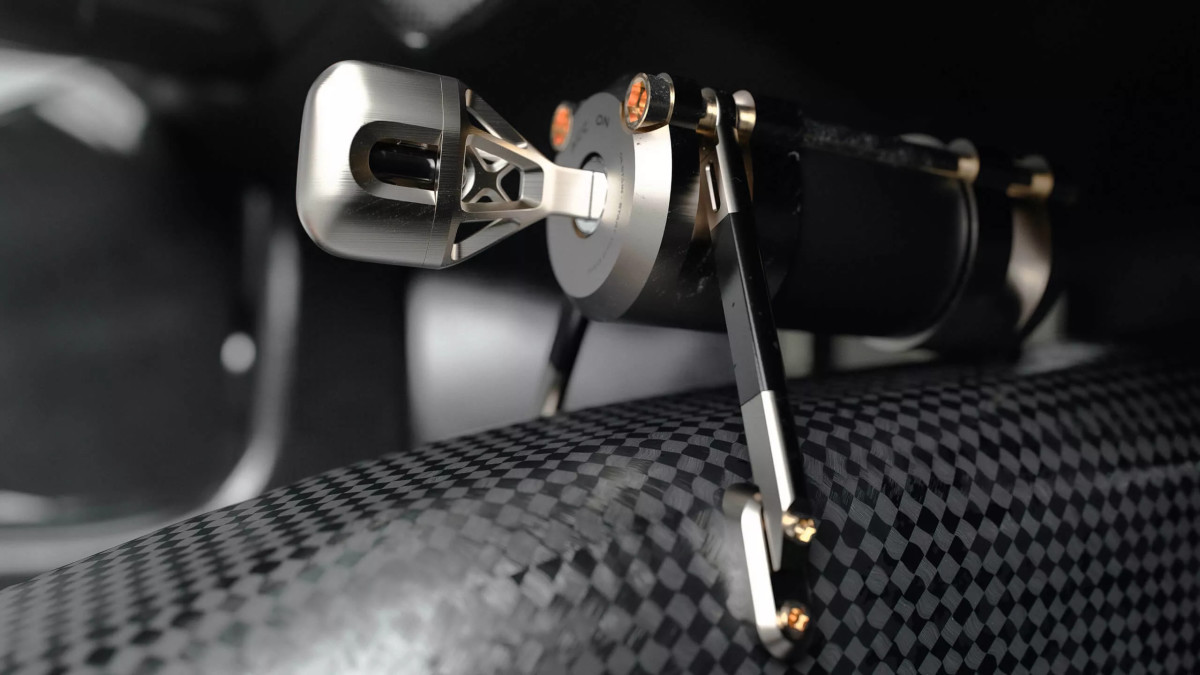In a world dominated by hybrid hypercars built by billion-dollar conglomerates, the Oil Stain Lab HF‑11 is a welcome oddity. It’s the creation of two Ukrainian-American brothers, Nikita and Iliya Bridan — ex-Honda, Cadillac and Genesis designers — who decided the only way to scratch their creative itch was to build a 12,000 rpm, dual-drivetrain, 2,000-pound hypercar out of sheer obsession.
Only 25 will be made. Each one costs at least $1.85 million, or $2.3 million if you want both powertrains.

View the 3 images of this gallery on the
original article
Twin Madness: Flat‑Six Or EV, Or Both
The HF‑11 is about choice. Buyers can spec a 4.6-liter naturally aspirated flat-six making 600 hp, or step up to the unhinged 5.0-liter twin-turbo flat-six good for a staggering 1,200 hp — all mounted in the middle of a carbon monocoque and sending power to the rear wheels. Both are available with a six-speed manual or a seven-speed sequential box. That alone would be enough for most small-volume hypercars.
But this isn’t most hypercars.
Oil Stain Lab is also building a fully electric version with around 850 hp, and here’s the twist: thanks to a modular subframe system, owners can swap between the ICE and EV powertrains. That’s right — one car, two wildly different personalities, depending on the day, track, or mood.
12,000 RPM And 2,000 lbs
Despite the turbocharged flat-six having “just” six cylinders, it’s designed to scream all the way to 12,000 rpm. When combined with the car’s 910 kg weight, the HF‑11 promises a power-to-weight ratio that puts it well ahead of the Bugatti Chiron and toe-to-toe with the Gordon Murray T.50.
Performance claims remain vague — understandable for a car still in development — but 0–60mph in the low 3s seems conservative. Top speed? Unofficially, well beyond 200mph.

View the 4 images of this gallery on the
original article
Inside The Machine
Step into the HF-11 and you’ll find a cockpit that looks like it was designed by a watchmaker having a nervous breakdown inside an F1 wind tunnel. The entire cabin is draped in carbon weave, from the exposed monocoque to the sculpted centre console — not just for weight savings, but sheer visual drama. There’s no touchscreen, no voice assistant, and certainly no cupholders. What you get instead is a bank of heavy-duty toggle switches, rotary dials, and knurled metal knobs straight out of a Cold War fighter jet.
The shifter itself is a skeletal work of art: part titanium sculpture, part ballistic missile trigger. Above it, the triple-pod analogue dash recalls classic Porsche GT racers, but everything else feels raw, functional, and unapologetically mechanical. Even the starter switch appears to be mounted inside a billet aluminium pod held together with titanium struts. It’s less interior, more exoskeleton.
There’s suede where you need it and structure where you don’t. The HF-11 doesn’t try to coddle you. It tries to connect you — to the drivetrain, to the chassis, and to the road. If you want ambient lighting and a Spotify playlist, look elsewhere. This thing was built to be felt, not filtered.
View this post on Instagram
A Real Car, Built By Real People
The HF‑11’s styling feels familiar but alien. It riffs on classic Porsche silhouettes — there are shades of Carrera GT, 962, even 917 — but everything is dialed up to 11. Giant rear diffusers, razor-edge front wings, and track-ready aero components all scream performance. Yet, inside, it’s raw, stripped-back, and mechanical. Think Group C meets bespoke hot rod.
What makes the HF‑11 more than a concept car with delusions of grandeur is the pedigree behind it. The Bridan twins were involved in cars that sold in the millions, but they’re chasing purity now. Their mission: build the “ultimate human-scale hypercar,” one with minimal electronics, obsessive focus, and mechanical soul.
They already made waves with the viral Half-11, a chopped-up Porsche homage that earned cult status. The HF‑11 is its spiritual evolution — faster, crazier, and far more complete.
This isn’t just an ambitious spec sheet. It’s two engineers turning decades of experience and design frustration into an unfiltered, track-ready love letter to speed. And whether it sells out or implodes spectacularly, it deserves to be noticed.